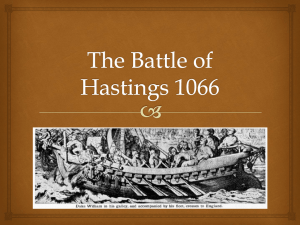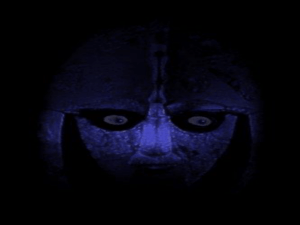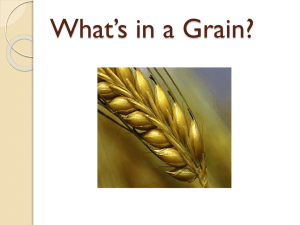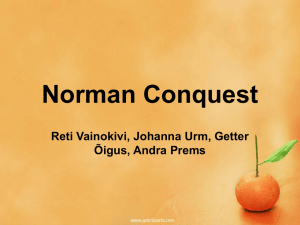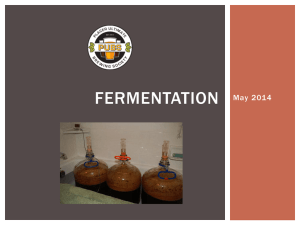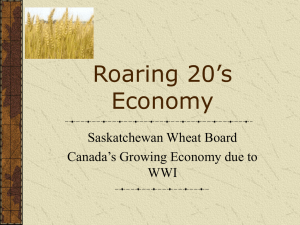Harold J. Gulbransen
advertisement
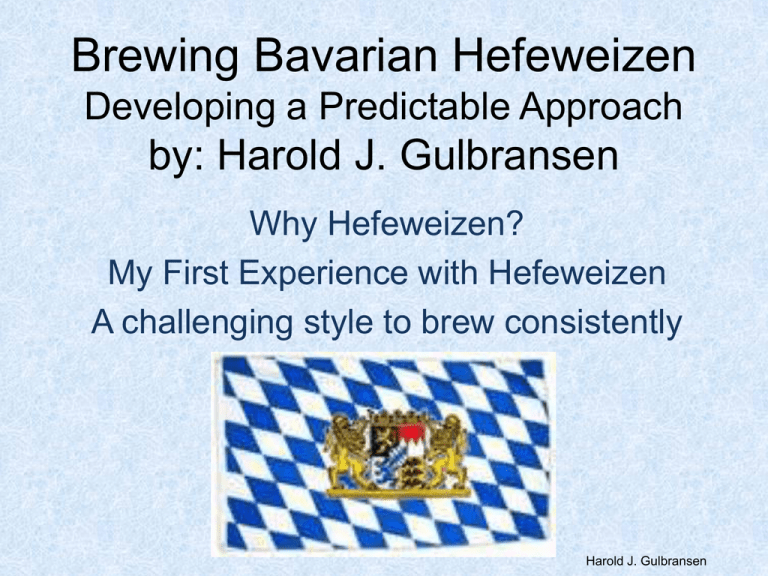
Brewing Bavarian Hefeweizen Developing a Predictable Approach by: Harold J. Gulbransen Why Hefeweizen? My First Experience with Hefeweizen A challenging style to brew consistently Harold J. Gulbransen Outline of Presentation: • Beer Style, History, Ingredients & Brewing Process • Tastings - 5 Batches of Hefeweizen were brewed using different parameters • Expert Tasting Panel to provide sensory evaluation of the different beers o Thanks to Gordon Strong, Ted Hausotter & Jamil Zainasheff • Discuss: Wheat Malt, POF+ Yeast & Mash profiles • Conclusions & a reasonable approach to Homebrewing Bavarian Style Hefeweizens Harold J. Gulbransen Harold J. Gulbransen What’s in a Name? Weizen – wheat, implies wheat beer Hefeweizen – wheat beer w/ yeast Weissbier – white beer & wheat beer Hefeweissbier – wheat beer w/ yeast Weissbier Hell - pale colored Weizen Dunkel Weizen – dark wheat beer Weissbier Dunkel – dark white beer Weizenbock – wheat beer brewed to Bock strength [16° P = 1.064 OG] Harold J. Gulbransen • Bavarian Hefeweizen: • a brief history • • 1st Weizens appear @ end of 15th century – brewed by Degenbergers - a noble family who have the rights to the style Last Degenberger dies in 1602 – brewing rights go to Bavarian House of Dukes Duke Maximillian I declared the brewing of Weissbier the exclusive right of the House of Dukes – no public brewing of Weissbier Height of popularity was in the 17th & 18th centuries • Large Weissbier Brewery built on the site of the Hofbrauhaus in Munich • By 1802 Weissbier had lost it’s popularity and the Brewery was leased to a private brewer 1855 Georg Schneider leases the brewery & in 1872 negotiates the release of the brewing rights for Weissbier from the royals By 1888 he had moved to a new brewery and tripled production The real Renaissance for Weissbier didn’t arrive until well after WW II • • • Harold J. Gulbransen Profiles of a Bavarian Hefeweizen [BJCP guidelines] Aroma – strong phenols [clove] + fruity esters [banana] in balance, no diacetyl or DMS, low to no hop aroma Appearance – straw to dark gold in color, moussy, long lasting head, cloudy due to high protein & yeast content Flavor – banana & clove flavors in balance, soft bready/grainy flavors of wheat, low to no hop flavor & low hop bitterness, no diacetyl or DMS Mouth feel – med light to med body, creamy OG: 1.044 – 1.052 FG : 1.010 – 1.014 IBU: 8 – 15 SRM: 2 – 8 ABV: 4.3% - 5.6% Harold J. Gulbransen What Hefeweizens are we sampling today? • • 2 Hefeweizens brewed with a single decoction mash, one fermented at 62o - 63oF & the other at 69o - 70oF – Hypothesis = the warmer fermentation will create a less pleasing balance of phenols & esters 3 Hefeweizens brewed w/ different mash profiles – Single infusion – Single decoction w/ a protein rest – Single decoction w/ a ferulic acid rest – Hypothesis – o single infusion will be less interesting, lower phenol & esters profile, thinner mouth feel [longer chain proteins will precipitate out] o Protein rest may negatively impact head retention o Ferulic acid rest is the classic mash profile Harold J. Gulbransen Recipe 8.0 gallons OG: 1.052 FG: 1.010 62.5% Wheat Malt [Briess] 35.7% Pilsen 2-row Malt [Briess] 1.8% Carastan 34oL 11.5 IBU 60 min boil 8.75 lbs 5.00 lbs 0.25 lbs 50% RO water 50% carbon filtered SD water 1.5 qts water/ 1 lb grain Hops: 14 gm Northern Brewer 9.0% aa 45 min 14 gm Hallertau Mittelfruh 3.0% aa 15 min Mash: Simplified Single Decoction Yeast: White Labs WLP 300 – 1600 cc starter Fermentation temps: 63oF vs. 70oF Packaging: Primed & kegged [to simulate bottle conditioning] Transferred to clean kegs before transport to Hotel Harold J. Gulbransen Harold J. Gulbransen Harold J. Gulbransen Harold J. Gulbransen Single Decoction Mash 210 Temperature [ °F ] 190 170 Strike Water 150 Grain 130 Main Mash Decoction 110 Sparge 90 70 -10 0 10 20 30 40 50 60 70 80 90 100 Time [minutes] Harold J. Gulbransen Harold J. Gulbransen For the Decoction: Remove 1.5 gallons of grain + 1.0 gallons of liquid & grain Harold J. Gulbransen Harold J. Gulbransen Harold J. Gulbransen Variables that were evaluated • Fermentation temperatures [63o F vs. 70oF] • Mash Profiles Variables that were not evaluated • Water profiles • Fermentation vessel geometry • Yeast strains [WLP 300 only] Addition experimentation needs to take place on the homebrew scale evaluating fermentation vessel geometry [open vs. closed] & different POF+ [phenol off flavor] yeast strains, as they behave quite differently in different environments and at different temperatures Harold J. Gulbransen Wheat Malt • <1% of wheat grown in US goes to beer – it is breed for high protein content to form gluten for bread making • Barley malt - 35% of the protein in Barley is gluten • Wheat malt – has more protein, more higher molecular weight proteins & 80% of the proteins are gluten !! • Winter Wheat has less protein than Summer Wheat Harold J. Gulbransen • Proteins cause: Wheat Malt – Cloudiness – Flavor stability problems – Wheat beers must be consumed fresh • Wheat lacks a husk – – – – The aleurone layer is one cell thick More difficult to malt than barley Mash is thicker Lautering problems [maximum 70% wheat malt in a grist] Harold J. Gulbransen Hefeweizen Grist • Must be 50% wheat malt by convention • Typically 60% - 70% wheat malt • Pilsner malt + a small % of a Cara malt for color Yeast need Amino Acids for a healthy fermentation Wheat beer grists have lower levels of AA’s vs. barley grists • Mash schedules should include a protein rest where proteolytic enzymes will create adequate levels of AA’s & compensate for low levels of low molecular weight proteins in wheat malt Harold J. Gulbransen Decoction Mashing • Definition of decoction mashing • Decoction mashing breaks down high molecular weight proteins for higher levels of AA’s – protein decomposition • Proper AA levels lead to optimal yeast reproduction & fermentation • Boiling causes starch molecules to burst making them more accessible to alpha amylase enzymes when returned to the main mash • Boiling the mash reduces mash pH by precipitating calcium phosphate • Results in a “cleaner wort” – less trub in kettle as it was left behind in the mush tun Harold J. Gulbransen Recipe 8.0 gallons OG: 1.052 FG: 1.010 62.5% Wheat Malt [Briess] 8.75 lbs 35.7% Pilsen 2-row Malt [Briess] 1.8% Carastan 34oL 5.00 lbs 0.25 lbs 50% RO water 50% carbon filtered SD water Hops: 14 gm Northern Brewer 14 gm Hallertau Mittelfruh 11.5 IBU 60 min boil 1.5qts water/1 lb of grain 9.0% aa 45 min 3.0% aa 15 min Mash: Single Infusion at 152oF: Single Decoction w/ a Protein Rest: Single Decoction w/ a Ferulic Acid Rest Yeast: White Labs WLP 300 – 1600 cc starter Fermentation temps: 63oF Packaging: Primed & kegged [to simulate bottle conditioning] Transferred to clean kegs before transport to Hotel Harold J. Gulbransen
